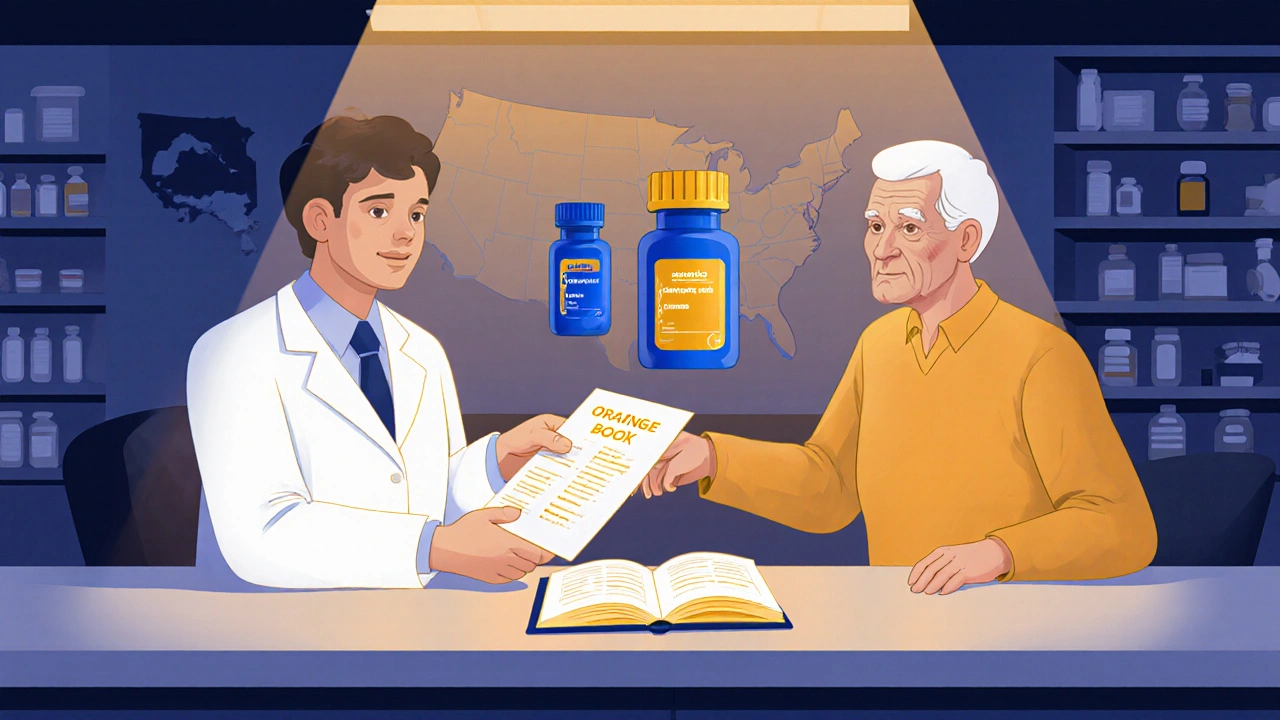
When you pick up a prescription at the pharmacy, you might not realize that the pill in your hand wasn’t necessarily the one your doctor wrote on the paper. That’s because pharmacists in most U.S. states have the legal authority to swap out brand-name drugs for cheaper generics-or even switch to a different drug in the same class. But here’s the catch: what a pharmacist can do varies wildly depending on which state you’re in. One pharmacist in Colorado can prescribe birth control and adjust diabetes meds under a statewide protocol. Another in Alabama needs a doctor’s okay just to swap one insulin for another. This isn’t just paperwork-it’s a patchwork of laws that affects how quickly you get treated, how much you pay, and even whether you get the right medicine at all.
What Pharmacists Are Allowed to Substitute
There are two main types of substitution: generic and therapeutic. Generic substitution means swapping a brand-name drug for a chemically identical, FDA-approved version. It’s legal everywhere. Therapeutic substitution is more complex: it means replacing a drug with another from the same class but with a different chemical structure-like switching from one statin to another, or from one antidepressant to a different one. This isn’t automatic. Only 27 states let pharmacists do it without calling the prescriber first.
The FDA’s Orange Book, which lists all approved drugs and their therapeutic equivalence ratings, is the bible for this. As of January 2024, it contains over 13,700 ratings. Pharmacists must check this before making any substitution. If a drug isn’t rated as AB-equivalent, substitution isn’t allowed-even if it’s the same class. This isn’t a suggestion. It’s a legal requirement.
State-by-State Differences That Actually Matter
Let’s say you’re on lisinopril for high blood pressure. In Texas, your pharmacist can swap it for another ACE inhibitor only if they call your doctor. In Oklahoma, they can do it on the spot and just write a note. In Colorado, they can switch you to a different blood pressure med entirely under a statewide protocol-no doctor’s permission needed. And in Maryland, they can write you a new prescription for birth control without you ever seeing a physician.
These aren’t hypotheticals. They’re real rules that change how care is delivered. In states with strong substitution laws, pharmacists are stepping into roles traditionally held by doctors-especially in rural areas where primary care is scarce. CMS data shows that in rural communities, pharmacist-led substitution reduced medication access gaps by 34%, compared to just 19% in cities. That’s not a minor improvement. That’s life-changing.
But in states like Alabama, Florida, and Mississippi, pharmacists are still stuck as order-fillers. They can’t even switch insulin without a call to the prescriber. For someone with diabetes who can’t get an appointment for weeks, that delay can mean missed doses, higher A1C levels, or even hospital visits.
Documentation: The Paper Trail That Saves Lives
It’s not enough to just swap the drug. You have to prove you did it right. Thirty-two states require pharmacists to write a note directly on the prescription-things like “Substituted per state law” or “Intentional Therapeutic Drug Class Substitution.” Fourteen states give you 72 hours to report it. Nineteen states require the prescriber to be notified within 24 to 48 hours.
And consent? That’s even messier. Seventeen states require written, signed consent from the patient. Nine only need verbal confirmation. Fourteen states don’t require any consent at all-just documentation. This inconsistency creates chaos for pharmacists who work across state lines. One chain pharmacy in Ohio reported that their electronic system flagged 42% of prescriptions as “non-compliant” simply because the documentation format didn’t match the state’s rules.
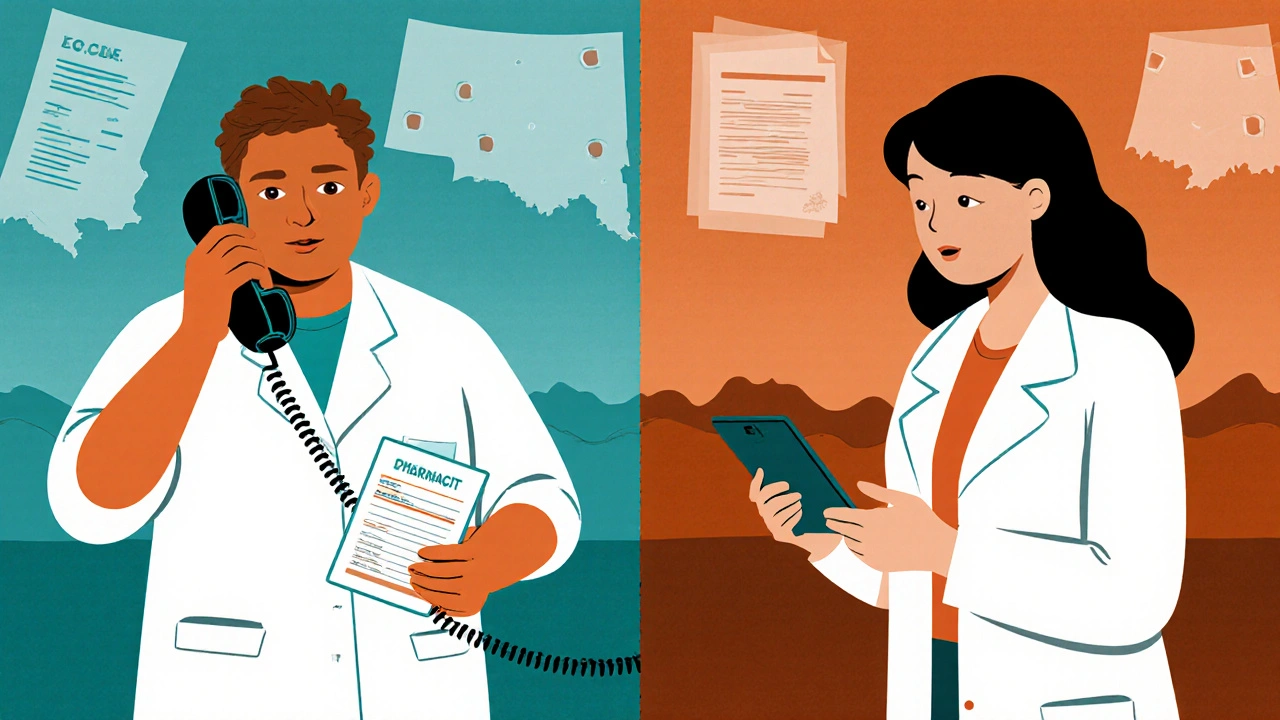
The Federal Twist: Paxlovid Changed Everything
On July 6, 2022, the FDA did something unprecedented: it gave every licensed pharmacist in the U.S. the right to prescribe Paxlovid for eligible COVID-19 patients. This wasn’t a state law. It was federal authority overriding state restrictions. Pharmacists had to verify age, weight, test results, and kidney/liver function-all without a doctor’s signature.
It was a turning point. For the first time, pharmacists weren’t just swapping pills-they were making clinical decisions based on lab data and patient history. And it worked. Studies showed that in states where pharmacists could prescribe Paxlovid, patients got treatment 2.3 days faster than those who had to wait for a doctor. That’s the difference between recovery and hospitalization.
Why This Matters for Patients
Imagine you’re 68, on Medicare, and your brand-name blood pressure med costs $120 a month. Your pharmacist swaps it for a generic that costs $4. You save $1,152 a year. That’s not a luxury-it’s the difference between filling your prescription or skipping doses.
Therapeutic substitution adds another layer. A patient with depression might respond better to sertraline than fluoxetine. If their pharmacist can switch based on side effects or cost, they get better outcomes faster. A 2023 APhA survey found that 68% of pharmacists in states with expanded authority saw improved patient adherence and fewer side effects.
But it’s not just about money. It’s about access. In areas with fewer doctors, pharmacists are the first-and sometimes only-point of contact. A 2024 study from the National Pharmaceutical Association found that in states with full substitution authority, 87% of pharmacies actively used therapeutic substitution. In restrictive states? Just 22%.
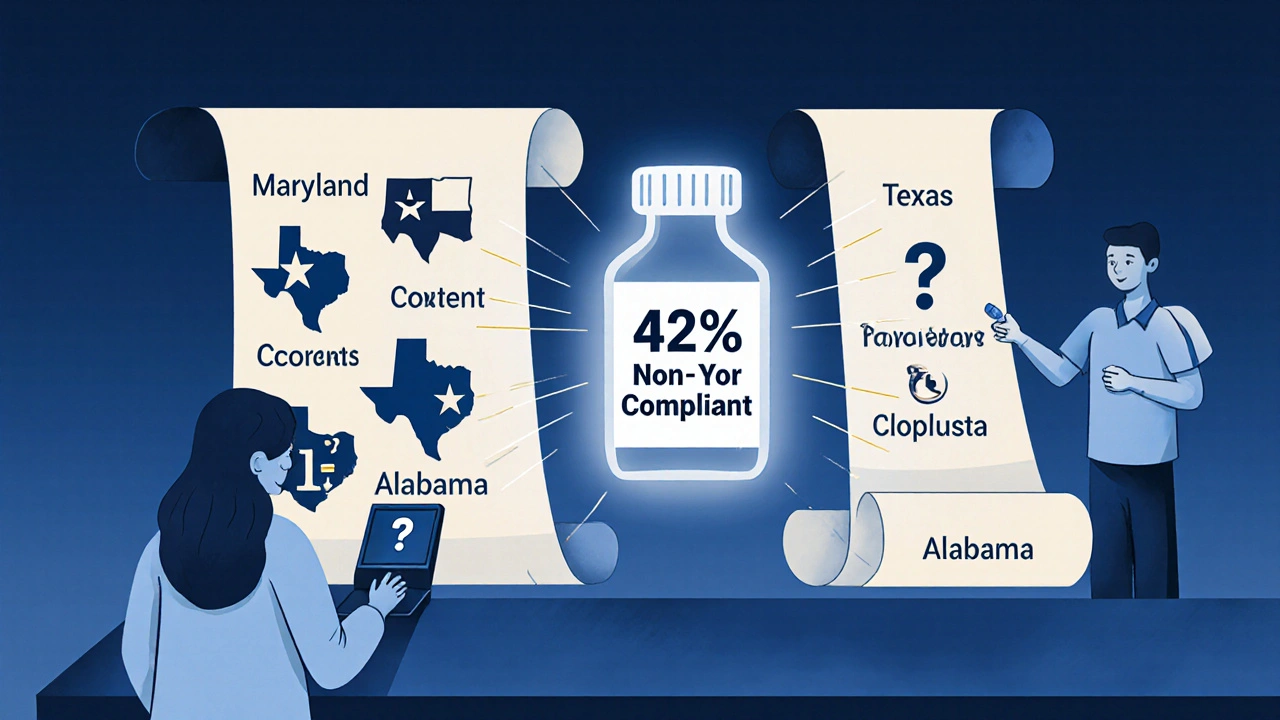
The Push for Change-and the Pushback
There’s growing momentum to expand pharmacist authority. As of March 2024, 19 states are considering new laws to let pharmacists prescribe more medications, including mental health drugs and chronic disease treatments. Virginia and Illinois are likely to pass reforms by the end of the year.
But not everyone agrees. The American Medical Association argues that letting pharmacists make these calls without integrated medical records could lead to dangerous drug interactions, especially for patients with multiple conditions. Dr. David Fleming of JAMA Internal Medicine warned that “fragmented care” is a real risk when pharmacists don’t have full access to a patient’s history.
Still, the data supports expansion. The Congressional Budget Office estimates that broader pharmacist substitution authority could save $120-$150 billion annually by 2030. That’s not just cost-cutting-it’s better care, faster access, and fewer hospitalizations.
What Pharmacists Need to Stay Legal
If you’re a pharmacist, you can’t rely on what you learned in school. State laws change every year. Colorado requires 12.75 hours of training just for their statewide protocols. Other states demand extra hours for documentation, consent, and EHR use. Pharmacists working in multi-state chains often need 40+ hours of additional training just to keep up.
Tools help. Kroger Health reduced substitution errors by 37% by creating standardized templates and training modules that work across all their locations. Electronic systems that auto-populate required notes and flag non-compliant substitutions are no longer a luxury-they’re a necessity.
And don’t forget the patient. Seventy-eight percent of pharmacy complaint logs mention confusion about why a drug was swapped. A quick explanation-“This is the same kind of medicine, just cheaper”-can prevent misunderstandings and build trust.
What’s Next?
The future of pharmacy isn’t just filling prescriptions. It’s managing care. States like Colorado and Maryland are already proving that pharmacists can safely handle chronic disease management, birth control, and even acute treatments like Paxlovid. The next frontier? Mental health medications. Four states are already testing pilot programs for pharmacists to prescribe antidepressants and anti-anxiety drugs under protocol.
The question isn’t whether pharmacists should have more authority. It’s how fast we’ll fix the patchwork of laws that still hold them back. For patients in rural towns, for those without insurance, for people juggling multiple meds-the answer can’t wait.
Can a pharmacist legally substitute any brand-name drug with a generic?
Yes, in all 50 states and D.C., pharmacists can substitute a brand-name drug with a generic version if it’s rated therapeutically equivalent by the FDA’s Orange Book. The substitution must be allowed by the prescriber (unless they mark "Do Not Substitute"), and in 49 states, the patient must be notified. The generic must meet strict FDA bioequivalence standards (80-125% of the brand’s absorption rate).
What is therapeutic substitution, and where is it allowed?
Therapeutic substitution means replacing a drug with another in the same class but different chemical structure-like switching from atorvastatin to rosuvastatin. It’s allowed in 27 states, but rules vary. Some require patient consent, others require prescriber notification, and a few (like Colorado) allow it under statewide protocols without any approval. California only permits it for insulin, while Maryland allows it for birth control under specific conditions.
Do I have to give consent before a pharmacist substitutes my medication?
It depends on your state. In 17 states, you must sign a form giving consent. In 9, verbal approval is enough. In 14 states, no consent is required-but the pharmacist must still document the substitution. If you’re unsure, ask. You have the right to know what’s being changed and why.
Can pharmacists prescribe medications now?
In limited cases, yes. Since July 2022, all pharmacists can prescribe Paxlovid for eligible COVID-19 patients under federal authority. Additionally, Maryland allows pharmacists to prescribe birth control, and Colorado lets them prescribe certain non-OTC drugs under state protocols. These are exceptions, not the rule-but they’re growing.
Why do some states restrict pharmacists more than others?
It comes down to politics, history, and medical lobbying. States with strong pharmacy associations and rural access issues tend to expand authority. States with powerful medical associations often resist, fearing loss of control over prescribing. There’s no clinical reason for the differences-just legal and political ones. The result? You might get better care in Oregon than in Alabama, even if you have the same condition.
How does pharmacist substitution save money?
Generic substitution alone saves the U.S. healthcare system about $197 billion per year. Therapeutic substitution adds more-by choosing equally effective but cheaper drugs, pharmacists reduce out-of-pocket costs for patients and lower insurance spending. The Congressional Budget Office estimates full expansion of substitution authority could save $120-$150 billion annually by 2030.
Pharmacists aren’t just handing out pills. They’re the last line of defense against medication errors, cost barriers, and access gaps. The law is catching up-but only in some places. Until every state recognizes their full potential, patients will keep paying the price in delays, confusion, and higher costs.
robert cardy solano
Man, I never realized how much the pharmacy game varies by state. I got my blood pressure med switched in Texas and didn’t even know it until I saw the receipt. Just assumed it was the same pill. Turns out I got lucky.
Sarah Swiatek
Let’s be real-pharmacists are the unsung heroes of primary care. In rural areas, they’re the only one who can spot a dangerous interaction before you leave the store. But the patchwork of laws? Absolute chaos. One state lets them prescribe birth control, another won’t let them swap insulin without a 3-day wait. It’s not about training-it’s about politics. Doctors don’t want to lose control, even when the data says pharmacists do it better and cheaper. And don’t get me started on the documentation nightmares. I’ve seen pharmacists spend more time filling out forms than talking to patients. Sad.
serge jane
There’s something deeply ironic about how we treat pharmacists. We trust them to catch deadly drug interactions, warn us about allergies, and explain complex regimens-but we won’t let them make a simple substitution without a 17-page consent form and a notarized letter from a doctor who hasn’t seen the patient in a year. It’s like hiring a chef to cook your meal but forcing them to ask permission before adding salt. The system isn’t protecting patients-it’s protecting bureaucracy. And the cost? Not just in dollars. It’s in delayed care, skipped doses, and unnecessary ER visits. We’re not talking about fringe cases here. We’re talking about real people with diabetes, hypertension, depression. If you’re okay with that, you’re okay with systemic neglect disguised as regulation.
Cinkoon Marketing
Interesting read. I’m from Canada and we’ve had pharmacist prescribing for years. Birth control, antibiotics, even some asthma meds. No drama. No paperwork. Just better access. Why can’t we just… do that here? We’re not aliens. We’re just neighbors with better laws.
Rebecca Cosenza
Anyone who thinks pharmacists shouldn’t have more authority is either a doctor scared of competition or someone who’s never had to choose between rent and meds. 🙄
Nick Naylor
The FDA’s Orange Book? It’s not a ‘bible’-it’s a corporate-approved list. The pharmaceutical industry controls what gets rated AB-equivalent. And now you want pharmacists to make clinical decisions based on a system rigged by Big Pharma? You’re not protecting patients-you’re outsourcing control to a profit-driven machine. And Paxlovid? That was a crisis exception-not a precedent. Don’t let them normalize this. The AMA is right. Fragmented care kills. And it starts with letting non-physicians prescribe.
Dave Wooldridge
They’re already testing antidepressants. Next thing you know, they’ll be giving out insulin pens in Walmart. And who’s monitoring this? Who’s checking the charts? The system’s being dismantled piece by piece. I bet you they’re not even logging all the substitutions. It’s a slow-motion power grab. Pharmacies are corporate fronts now. They don’t care about you-they care about the bottom line. And now they want to be doctors too? Wake up. This isn’t progress. It’s erosion.
swatantra kumar
Bro, in India we get meds from the street vendor sometimes 😅 But seriously-this is why I love how the U.S. has these debates. You guys actually care about the system. In my country, we just take what we get. But hey-maybe one day we’ll get pharmacist-prescribed birth control too 🙌
Bill Camp
Let me get this straight-some states let pharmacists prescribe birth control but not insulin? That’s not logic, that’s madness. We’re treating women’s health like a bonus feature and chronic disease like a threat. This isn’t about training or safety-it’s about who gets to be seen as a real caregiver. And guess who doesn’t? The people who actually hand you the pills every damn month.
Lemmy Coco
so i work in a multi-state chain and honestly the documetation is a nightmare. one state wants a note on the scrip, another wants a digital log, another needs the patient to sign a form in triplicate. we had a guy come in with a script from ny and we had to call his doc because the system flagged it as ‘non-compliant’ even though it was totally legal. and the patient was confused because he’d never had to sign anything before. i mean… why is this so hard? we’re not trying to kill anyone. we’re trying to get them their meds before they skip another dose.
Pawan Jamwal
USA is the only country where a pharmacist can’t even swap a pill without 12 forms and a congressional hearing. We’re better than this. We’re the richest, most advanced nation on earth-and we let red tape kill people slowly. Shame on every state legislator who voted no. You’re not protecting anyone. You’re protecting your donors.
rob lafata
Let’s cut the crap. This isn’t about patient care. It’s about control. The AMA doesn’t want pharmacists prescribing because they’re scared their monopoly on ‘medical authority’ is crumbling. Meanwhile, the pharmacy chains are drooling over the profit potential of turning every counter into a mini-clinic. And the patient? They’re just the ATM. You think the pharmacist giving you birth control cares about your mental health? No. They care that you didn’t leave without buying a $5 protein bar and a bottle of water. This isn’t empowerment-it’s commodification dressed up in scrubs. And don’t tell me about ‘cost savings.’ You think the $120 billion saved will go to patients? Nah. It’ll go to shareholders. And the next thing you know, your ‘generic’ pill is made in a factory in China with no oversight. Welcome to the future. It’s cheaper. It’s faster. And it’s not yours anymore.

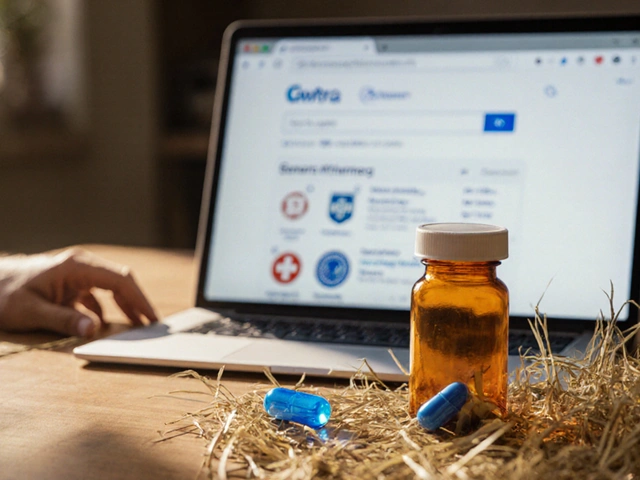
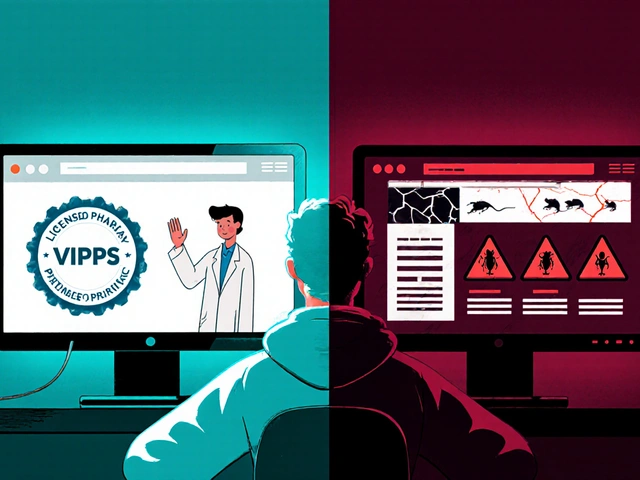



Write a comment